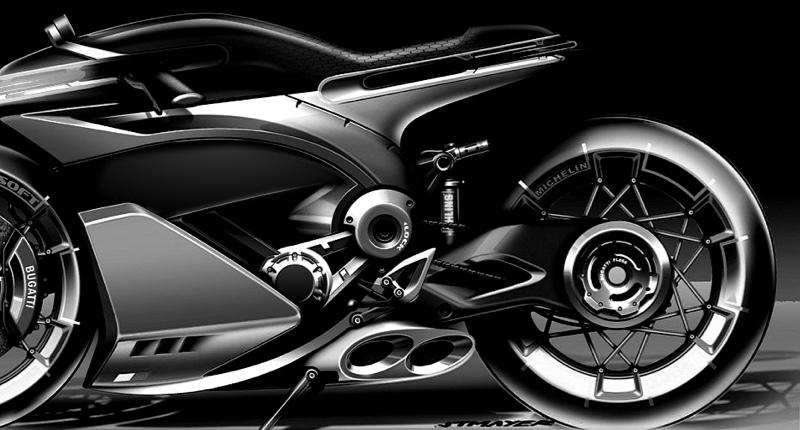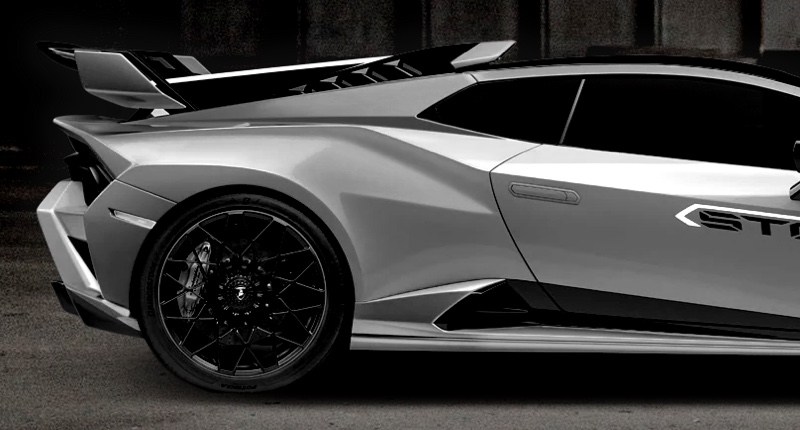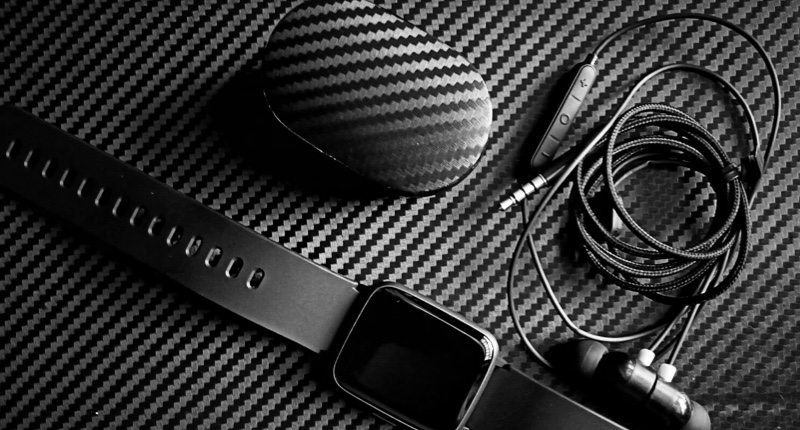Custom Carbon Fiber Parts for High-Performance Bikes: Guide from Supreem Carbon
- Custom Carbon Fiber Parts for High-Performance Bikes: What Riders and Teams Want
- Introduction — Why search for Custom Carbon Fiber Parts for High-Performance Bikes
- Performance Benefits — Lightweight and Stiffness for Competitive Advantage
- Material Properties — Typical Ranges and What They Mean for Bike Parts
- Manufacturing Methods — Choosing the Right Process for Custom Bike Parts
- Design and R&D — How Customization Improves Real-World Performance
- Quality Control — Standards, Testing and Traceability for High-Performance Parts
- Cost Considerations — Investment vs Performance Gains
- Lead Times and Minimum Orders — What to Expect from a Manufacturer
- Common Custom Bike Parts — Where Carbon Fiber Makes the Biggest Difference
- Comparison — Carbon Fiber vs Aluminum vs Steel for Bike Components
- Selecting a Manufacturer — What to Ask Before You Order Custom Parts
- Case Use — From Prototype to Series: Typical Development Flow
- Warranty, Repair and Lifecycle — Practical Considerations for Riders
- Conclusion — How Supreem Carbon Supports High-Performance Bike Customization
- Frequently Asked Questions
Custom Carbon Fiber Parts for High-Performance Bikes: What Riders and Teams Want
Introduction — Why search for Custom Carbon Fiber Parts for High-Performance Bikes
Riders, teams, and bike OEMs searching for Custom Carbon Fiber Parts for High-Performance Bikes want measurable performance gains: lower weight, higher stiffness, targeted compliance, and bespoke fit or aero advantage. They also look for reliable manufacturing partners who deliver consistent quality, reasonable lead times, and traceable processes. Supreem Carbon, established in 2017, specializes in customized carbon fiber parts for motorcycles and automobiles and is well positioned to serve high-performance bicycle needs with R&D, design, production and sales under one roof.
Performance Benefits — Lightweight and Stiffness for Competitive Advantage
Custom carbon fiber parts provide clear competitive advantages for high-performance bikes. Compared with traditional materials, carbon composites allow engineers to tune stiffness, strength and compliance by selecting fiber type, weave orientation, and resin system. Riders benefit from reduced mass and improved power transfer — essential for climbing and sprinting — while frame and component designers can optimize aerodynamics without sacrificing structural integrity.
Material Properties — Typical Ranges and What They Mean for Bike Parts
When specifying custom carbon fiber components, it's important to understand realistic material ranges. Carbon fiber composites used in bike parts typically have overall densities near 1.5–1.7 g/cm³ (vs aluminum ~2.7 g/cm³ and steel ~7.85 g/cm³), allowing significant weight reductions. Tensile strength and modulus vary by fiber and layup: depending on fiber type and design, tensile strengths for carbon fiber composites commonly fall within several hundred to over 1000 MPa, and moduli commonly span ~70–150 GPa for many high-performance layups. These ranges enable tailored performance for frames, forks, handlebars, seatposts and aerodynamic fairings.
Manufacturing Methods — Choosing the Right Process for Custom Bike Parts
Manufacturing method affects final part quality, repeatability and cost. Common methods include hand lay-up/prepreg with autoclave curing (highest consistency and strength), resin transfer molding (RTM) (good repeatability for medium volumes), and vacuum bagging (cost-effective for one-offs). For high-performance bike parts, prepreg/autoclave or High Quality RTM are typical choices because they provide tight fiber volume fraction control and superior surface finish—key for structural and aero-critical components.
Design and R&D — How Customization Improves Real-World Performance
True customization means integrating rider geometry, intended use, and testing feedback. Supreem Carbon’s integrated R&D and design teams optimize layup schedules and fiber orientation to match required stiffness and compliance targets—e.g., stiffer bottom bracket region for power transfer or engineered compliance in the seatpost area for comfort. Rapid prototyping and finite element analysis (FEA) help iterate designs before full production, reducing risk and development time.
Quality Control — Standards, Testing and Traceability for High-Performance Parts
High-performance bike components must meet rigorous quality standards. Manufacturers should follow defined process controls, material traceability, plybook documentation, and testing protocols (static and fatigue testing). For bicycle and vehicle suppliers, ISO 9001 and industry-specific quality systems such as IATF 16949 are commonly used frameworks. Supreem Carbon operates with documented processes and skilled technicians to ensure consistent output across its product range.
Cost Considerations — Investment vs Performance Gains
Custom carbon parts are typically more expensive than mass-produced metal components because of tooling, material costs and labor. Costs vary by complexity, volume and chosen process (autoclave-prepreg parts cost more than vacuum-bagged one-offs). However, for competitive riders and OEMs, the performance returns—weight savings, aerodynamic gains, and tailored ride characteristics—often justify the investment. Supreem Carbon offers both one-off prototypes and small-to-medium production runs to balance tooling costs and lead times.
Lead Times and Minimum Orders — What to Expect from a Manufacturer
Lead times depend on complexity and production method. Prototype parts using hand lay-up can be delivered in weeks, while autoclave production and certified runs may take months including tooling and validation. Minimum order quantities vary—custom, low-volume items are feasible but may carry higher per-unit costs. Supreem Carbon’s manufacturing capability (4,500 m² factory, 45 skilled staff, and a catalog of over 1,000 products including 500+ custom parts) allows flexible production scales for both prototypes and series production.
Common Custom Bike Parts — Where Carbon Fiber Makes the Biggest Difference
High-performance bike parts commonly customized in carbon include frames, forks, handlebars, seatposts, wheels (rims), chainstays, aero fairings and luggage mounts. Each part benefits differently: frames and forks yield large weight and stiffness advantages; wheel rims and handlebars significantly affect aerodynamics and control; custom luggage or mounts deliver tailored utility for racing or endurance riding.
Comparison — Carbon Fiber vs Aluminum vs Steel for Bike Components
Below is a practical comparison to help buyers weigh trade-offs when searching for custom carbon fiber parts for high-performance bikes.
| Property | Carbon Fiber Composite | Aluminum Alloy | Steel |
|---|---|---|---|
| Typical density | ~1.5–1.7 g/cm³ | ~2.6–2.8 g/cm³ | ~7.8–8.1 g/cm³ |
| Stiffness (modulus) | ~70–150 GPa (design-dependent) | ~69 GPa | ~200 GPa |
| Weight-to-strength | Very high (engineer-able) | Good | Lower (heavier) |
| Corrosion resistance | Good (resin-protected) | Moderate (requires coatings) | Poor without protection |
| Typical cost | High | Moderate | Low |
Selecting a Manufacturer — What to Ask Before You Order Custom Parts
When contacting a supplier, ask for: documented process controls, material certificates (fiber and resin), tooling and prototyping approach, sample parts or references, lead time estimates, minimum order quantities, and post-delivery support. For performance applications, request fatigue test data and examples of previous bike or motorcycle parts. Supreem Carbon provides R&D-backed customization, production capability, and product lines across automotive and motorcycle carbon parts, making it a relevant partner for high-performance bicycle projects.
Case Use — From Prototype to Series: Typical Development Flow
A typical custom development path starts with concept and CAD design, moves to FEA and layup engineering, then prototype tooling and test articles. After mechanical testing and rider feedback, the design is refined for production tooling and process validation. Supreem Carbon’s integrated teams support this full cycle—reducing iterations and accelerating time-to-market for competitive bike components.
Warranty, Repair and Lifecycle — Practical Considerations for Riders
Carbon parts can last many years if designed and manufactured correctly, but they require appropriate crash and damage inspection protocols. Ask suppliers about warranty terms, repair services and recommended inspection intervals. Many carbon manufacturers offer repair guidance or post-crash evaluation services to maintain safety and performance throughout the part lifecycle.
Conclusion — How Supreem Carbon Supports High-Performance Bike Customization
For riders and teams focused on performance, custom carbon fiber parts are a proven route to measurable gains. Supreem Carbon combines expertise in R&D, design, and production, with a factory capable of prototyping and series production. Whether you need an aerodynamic fairing, a stiff and light frame tube, or a bespoke cockpit, partnering with an experienced manufacturer reduces risk and ensures performance targets are met. Contact Supreem Carbon to discuss specifications, prototyping, and production options via https://www.supreemcarbon.com/.
Sources and further reading:
- Industry reports and market analysis from Grand View Research and MarketsandMarkets (carbon fiber market trends)
- Composite manufacturing and standards information from ASTM International and ISO quality frameworks
- Technical references on material properties from engineering handbooks (e.g., ASM and materials science references)
- CompositeWorld and industry publications on manufacturing processes and best practices
- Bicycle industry publications and technical articles on carbon fiber components and real-world performance testing
Frequently Asked Questions
What lead time should I expect for a one-off custom carbon bike part?Lead times for one-off prototypes can range from 3–8 weeks depending on complexity and the chosen process. Autoclave-prepreg parts may require longer due to tooling and curing schedules.
How much weight can I realistically save by switching to carbon fiber parts?Weight savings depend on the part and previous material. Typical reductions versus steel or heavy aluminum parts are substantial (often 30% or more for the same function), but exact numbers depend on part geometry and design targets.
Are custom carbon parts safe for competitive racing?Yes, when designed and manufactured to industry standards with proper testing (static and fatigue tests). Verify the supplier’s quality controls, material certificates and test records before racing use.
What is a typical price range for custom carbon bike components?Prices vary widely by complexity and volume. Single prototypes and low-volume parts cost more per unit; expect higher costs for autoclave-cured prepreg parts and lower per-unit prices as production volume increases.
Do you provide design and R&D support for custom projects?Yes. Supreem Carbon integrates R&D, design, and manufacturing to support concept development, FEA-driven optimization, prototyping and production.
Custom carbon fiber car parts Manufacturers and suppliers
Transform Your Vehicle with Carbon Fiber Aero Parts | Supreem Carbon
Future Trends: 3D Printing Carbon Fiber for Aerospace Parts

The Ultimate Guide to Carbon Fiber Motorcycle Fairings: Benefits, Installation, and Maintenance
For Products
What is main products for factory?
Supreem carbon mainly produce carbon fiber custom products for automobile and motorcycle accessaries, including the design, develop and manufacturing of appearance parts, interior parts, functional parts, etc. Other carbon fiber custom goods also can produce for you.
For Order Delivery
What is the shipping time for the different ways?
Express delivery 5-7 days.
20-25 days by sea.
15 days by air.
For Customized Service
What is the customization process of carbon fiber products?
1. Customer provide 3D drawing, design requirement or idea
2. Technician evaluate project feasibility and provide a quotation
3. Project confirmation and arrange sample production
4. Delivery and customer feedback
5. Big scale orders production
For After-sales Service
Do you offer a warranty?
Six month standard warranty on all products. Damage due to installation error or natural elements will not be covered.
For Carbon Fiber Material
What are the advantages of carbon fiber?
High Strength-to-Weight Ratio
It is stronger than many traditional materials, such as steel and aluminum.This high strength-to-weight ratio allows for the creation of lightweight components that maintain structural integrity and durability.
Lightweight
One of the most significant advantages of carbon fiber is its low density, contributing to lightweight structures. This property is particularly crucial in industries where weight reduction is a priority, such as aerospace, automotive, and sports equipment.
Resistant to corrosion and chemicals
Carbon fiber is inherently resistant to corrosion, making it an ideal material for applications exposed to harsh environments or corrosive substances. This property contributes to the longevity of components and reduces maintenance requirements. Carbon fiber has good chemical resistance, making it suitable for use in environments where exposure to chemicals or harsh solvents is a concern. This resistance enhances the material's durability in various industrial settings.
Tolerant of high temperature
Carbon fiber exhibits excellent thermal stability and resistance to high temperatures. This makes it suitable for applications where components are exposed to elevated temperatures, such as in the aerospace and automotive industries.
Low thermal expansion
Carbon fiber has a low coefficient of thermal expansion, meaning it expands or contracts minimally with changes in temperature. This property contributes to dimensional stability, making carbon fiber components reliable in varying temperature conditions.
Aesthetic Appeal
Carbon fiber has a modern and high-tech appearance, contributing to its aesthetic appeal. This property is leveraged in consumer goods, automotive components, and sporting equipment where visual appeal is important.

Yamaha R1 Carbon Fiber Side Fairings
Introducing the Supreem Carbon Fiber Long Side Panels for Yamaha R1. Crafted with precision and expertise, this front side fairing is designed to elevate the performance and aesthetics of your R1. Made from high-quality carbon fiber, this fairing is not only lightweight but also incredibly durable, providing optimal protection for your motorcycle.

Yamaha R1 Carbon Fiber Airbox Tank Cover
The Supreem Carbon Yamaha R1 Carbon Fiber Airbox Tank Cover provides lightweight, durable protection with a sleek finish. Designed for R1 models, it enhances the style and performance of your bike. Its lightweight structure improves performance while maintaining the premium aesthetics necessary for high-end modification projects. As a dedicated manufacturer of carbon fiber parts, we provide stable production capacity, customization options, and strict quality control to support enterprise-level procurement and OEM/ODM needs.

Carbon Fiber Rear Seat Panel for BMW S1000R & M1000RR – Lightweight Performance
This carbon fiber rear seat panel is engineered for the BMW S1000R and M1000RR, offering superior rigidity, reduced weight, and a premium racing finish. Produced with autoclave technology and strict QC standards, the part ensures consistent OEM-level fitment. Supreem Carbon provides wholesale supply, stable bulk production, and customized solutions for global clients.

High-Performance Carbon Fiber Rear Undertail for BMW S1000R
Engineered for distributors, tuning brands, and motorcycle accessory businesses, the BMW S1000R Carbon Fiber Rear Undertail is a high-quality, durable, lightweight carbon fiber upgrade for the S1000R platform. This component is manufactured using aerospace-grade carbon fiber and precision molds to deliver superior stiffness, a seamless OEM-level fit, and a premium visual finish suitable for high-end aftermarket applications.
© 2024 Supreem Carbon All Rights Reserved.





Facebook
Pinterest
LinkedIn
Instagram